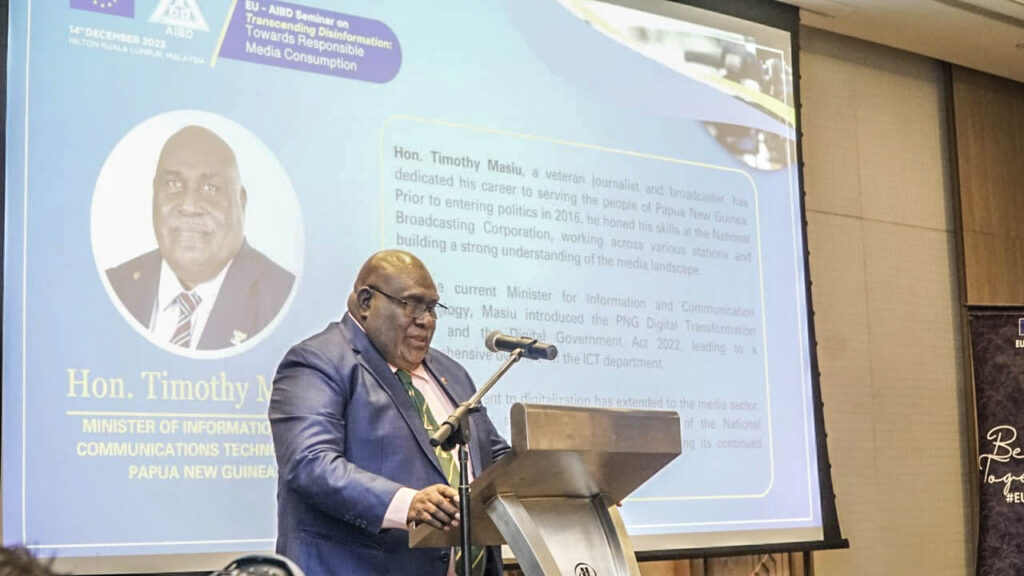Broadcasting in the Age of New Media: Opportunities for Programme & Technical Personnel
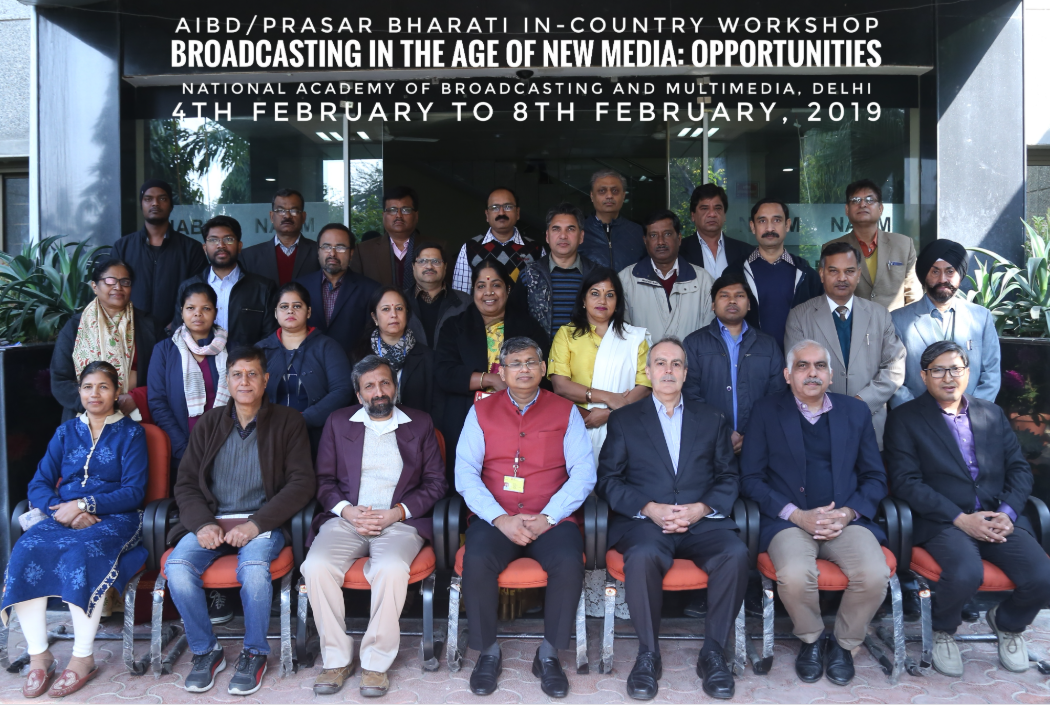
The new age platforms in media industry bring a paradigm shift in broadcasting. Internet and the new social media have transformed the media broadcast scenario across the globe. With the influx of new media tools, the media consumption patterns worldwide has changed drastically. Internet blogs, news portals and online news, Facebook, You Tube, podcast and webcast, and even the short messaging system (SMS), are all included in new media. Broadcasters in this age of new media not only face new challenges but also get ample opportunities to remain vibrant. The modern revolution enables everybody to become a journalist at little cost and with global reach. Nothing like this has ever been possible before. The emergence of blog streams is a reflection on society’s awareness of the importance of information dissemination. Traditional broadcast media has remained free. Then pay television came along to alter the model by introducing narrowcasting to paying customers. The internet has taken narrowcasting a step further by targeting small groups and individuals. Television networks are now keen to establish websites to help offset audience loss. Online radio and television, grabbing the ears and eyes of netizens, have the potential to become viable alternatives to on-air broadcasting. The reach of broadcasting stations is limited by signal range, whereas online broadcasting is available without any boundary and wherever internet coverage is available. At this juncture, it becomes imperative for the traditional broadcast professionals to learn about various emerging options of ever evolving so called new media.
Asia Pacific Institute for Broadcasting Development (AIBD) and National Academy of Broadcasting and Multimedia (NABM), the national training Institute of Prasar Bharati collaboratively organised an in-country training and workshop at Delhi, India during 4th to 8th February 2019. The theme of the training and workshop was “Broadcasting in the Age of New Media: Opportunities for Broadcasters” with the aim to inform participants about new media developments across audio and video platforms, including social media, smart speakers and podcasts.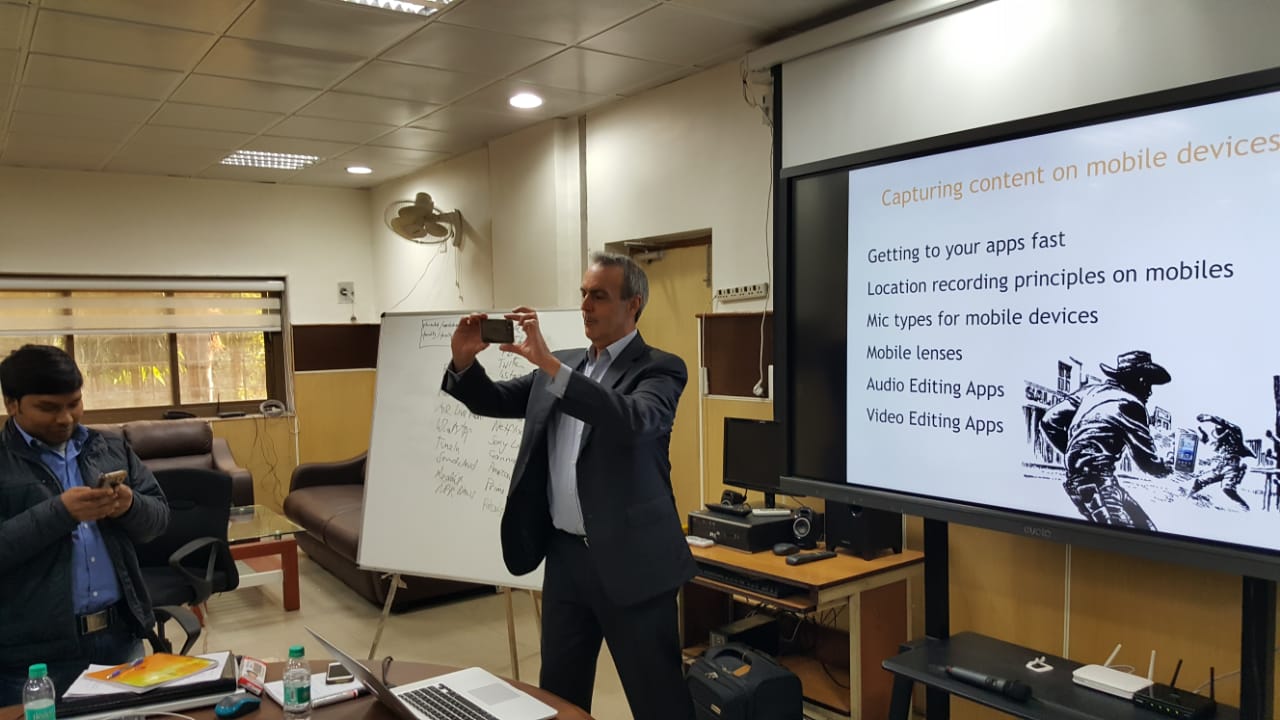
International trainer Steve Ahern, a broadcast journalism and new media expert from Australia planned and conducted the workshop, which explored new ways to use smart phones and new media technology to report broadcast content. The course also covered fake news and other elements of content creation in the new media environment. Twenty four staff members from Engineering and Programme departments of both All India Radio (AIR) and Doordarshan India (DDI) participated in the course. In addition several staff from NABM sat in on the course, using it as a Train the Trainer experience for themselves.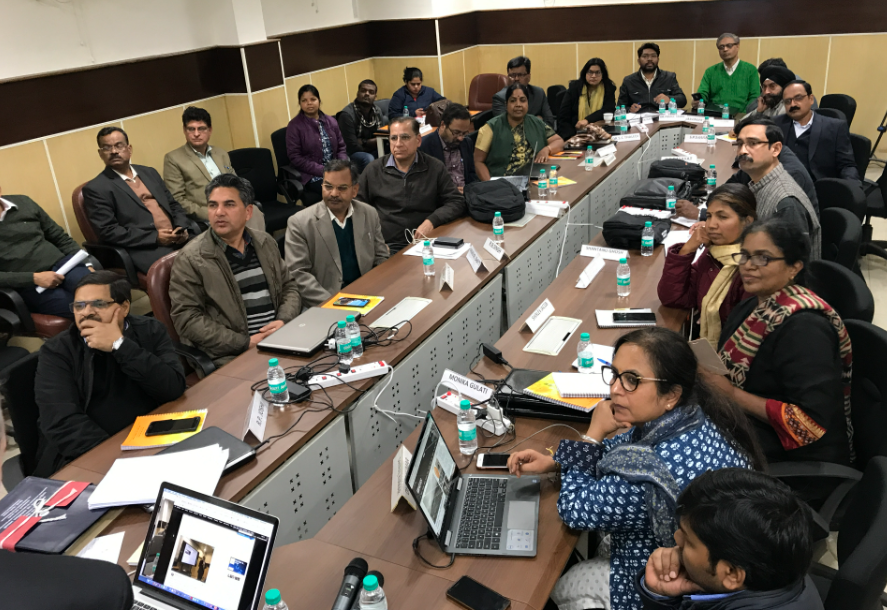
Participants were informed on how to understand the latest developments in social media and use the dynamic nature of new media to remain relevant. The course also highlighted the usage of Smart phones as a powerful tool for producing content faster and cheaper. The course suggested ways of delivering content in new media such as linear, non-linear, catch-up, download, Spotify and Pandora (which is highly popular in US ) along with traditional media. A session of the workshop was devoted to learning and exploring various editing apps for seamless and fast delivery of content. Examples of success stories were given in the course, such as an Afghan news agency which started using smart phone reporting and cloud services to decrease news reporting time. Another example was NHK, Japan’s national broadcasting organization, presenting content in small snack size with catchy video on social media to increase viewership among young people was an interesting case study. The changing broadcasting trends and use of social media was discussed with examples like in case of Indonesia who made use of citizen journalism. Several social media tips were shared like using social media for promotion, research, live interaction with audience and repackaging of programs was discussed. Maintaining a two way relationship with audience and to know what the audience want and also to educate audience using social media was discussed in great detail. Another interesting and useful topic was how to detect fake news on social media like Facebook and Twitter. Use of several already available websites for detecting fake news was discussed which is very useful for a broadcaster.
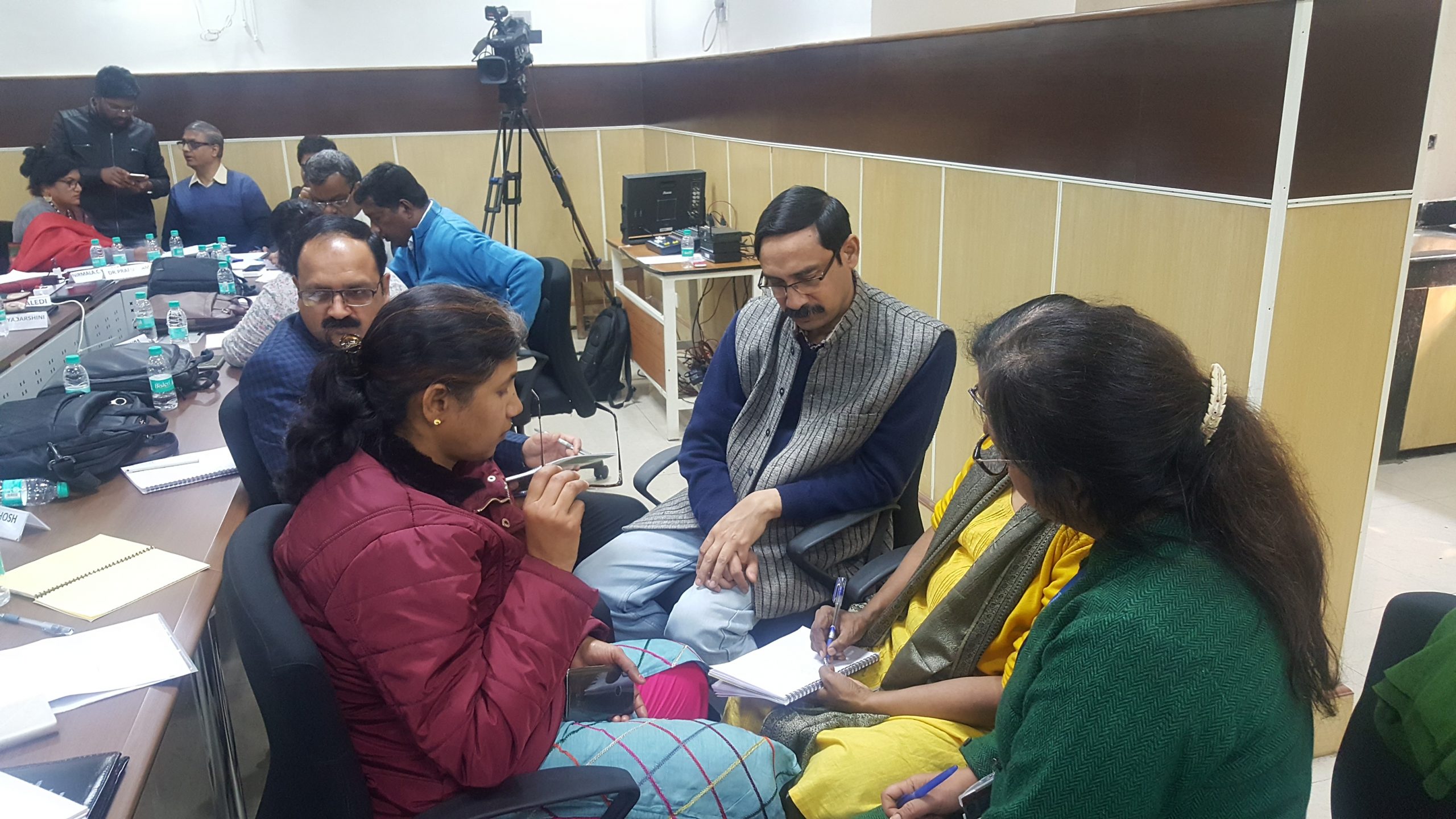
At the end of every session the participants had to take part in various assignments like shooting and editing videos using various apps on a smart phone. The class was asked to form a group and prepare a flow chart using new tools to optimize content for various mediums. A delightful session was also conducted where participants shared examples of fake news and discussed how to identify and combat it. Group members were also asked to file a news story of all the activities that took place in a workshop. The entire class was divided into three groups for the last assignment to create a New National Media Business, and all the groups presented their ideas of how new broadcasting businesses for the modern era should be organised, without downgrading the quality of journalism or cultural significance of the content. This activity crystallized all the content of the workshop so that participants would remember the content and know how to use it in their jobs when they returned to work.
The participants enjoyed the tools for use in social media for New Media gathering, editing and filing tools including mobile apps, social media accounts and social media monitoring tools. Podcasting, Vodcasting, Smart Speakers, AI, Blockchain and fake news busting were the hot topics discussed in detail. The course content was innovative and would be very useful in using social media in broadcasting which is need of the hour.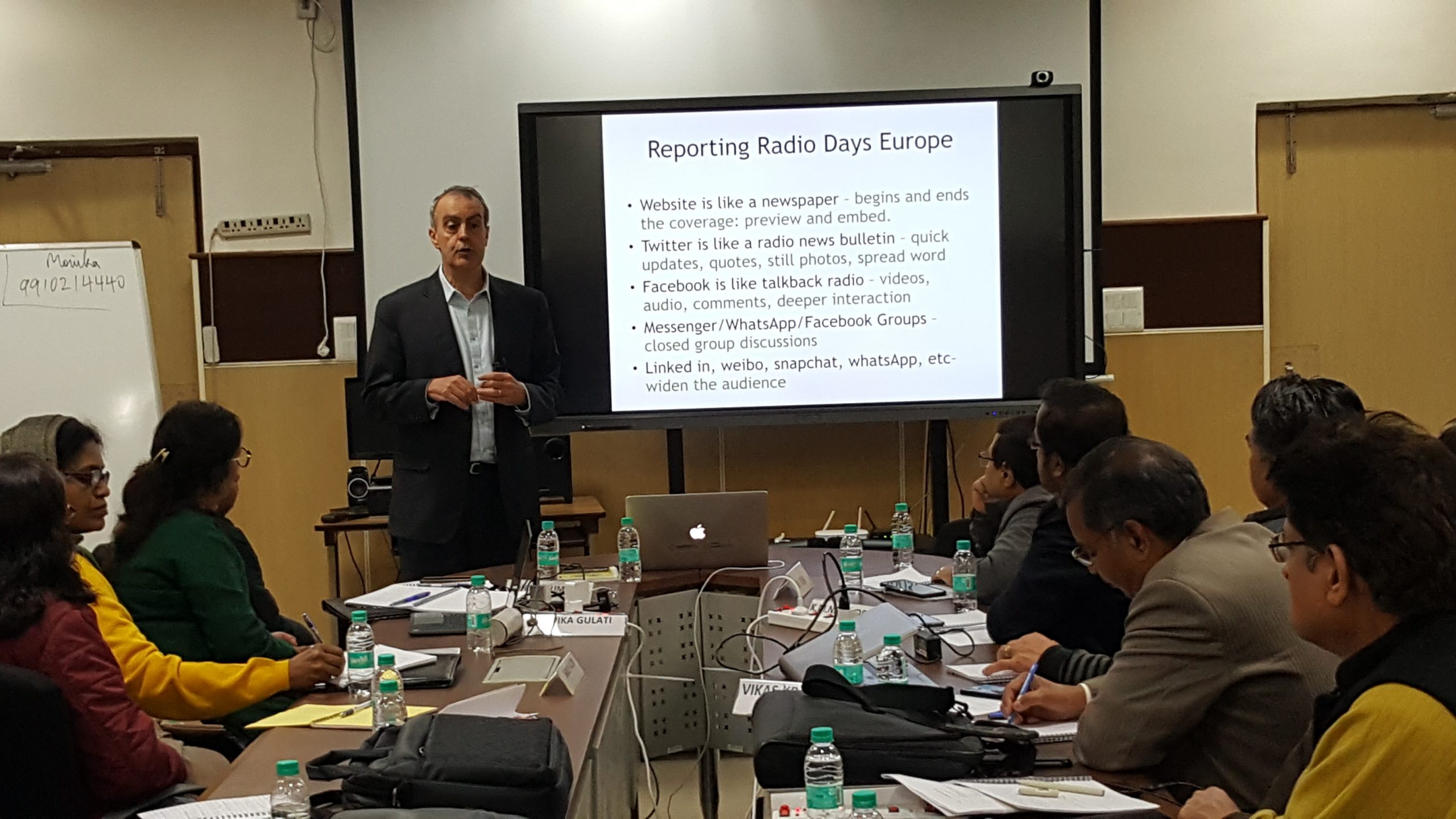
“The most striking and attractive feature about the training is that the faculty, Mr. Steve Ahern is the best one we can get for the purpose. He is well-versed in both the technical and sociological aspects of the contemporary media scenario. His democratic and liberal point of view, and avoidance of political extremes makes him the right trainer for AIR and DD.”
-Comment from Participant




